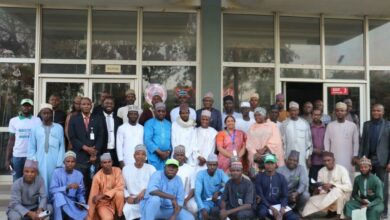East Asia and Pacific to sustain growth amid global headwinds, says World Bank

WASHINGTON, April 2, 2024 — Developing East Asia and Pacific is growing faster than the rest of the world but slower than it was before the pandemic, the World Bank said on Sunday in its semi-annual economic outlook for the region. While recovering global trade and easing financial conditions will support economies in the region, increasing protectionism and policy uncertainty will dampen growth.
Regional growth is projected to ease to 4.5 percent in 2024 from 5.1 percent last year, the World Bank’s East Asia and Pacific April 2024 Economic Update says. Growth in developing East Asia and Pacific excluding China is projected to pick up to 4.6 percent this year, up from 4.4 percent in 2023.
Growth in China is projected to moderate to 4.5 percent from 5.2 percent in 2023, as high debt, a weak property sector, and trade frictions weigh on the economy. Among Pacific Island countries, growth is forecast to slow to 3.6 percent in 2024 from 5.6 percent last year as the post-pandemic rebound dissipates. The slowdown partly reflects normalisation of growth in Fiji to 3.5 percent in 2024 from an exceptionally strong 8 percent last year.
“The East Asia and Pacific region is making a strong contribution to world economic growth, even as it faces a more challenging and uncertain global environment, aging population and the impacts of climate change,” said World Bank East Asia and Pacific Vice-President Manuela V. Ferro. “Countries of the region can sustain their growth momentum by accelerating the opening of more activities to private sector investment, resolving financial sector challenges, and boosting productivity.”
The outlook is subject to downside risks, which include a greater than expected slowdown in the global economy, higher for longer interest rates in major economies, increased uncertainty around the world about economic policies, and an intensification of geopolitical tensions.
A Special Focus section of the report presents evidence that productivity growth among leading firms in the region has lagged that of leading global companies. The gap is especially stark in digital-intensive sectors. Because new technologies typically gain traction first among leading firms and cascade later to other businesses, this trend raises concern across the business spectrum.
Impediments to competition, uneven worker skills and weak management contribute to lagging productivity growth among firms. Opening goods and services to greater competition and enhancing human capital – through investments in teachers and in tertiary education – can help increase productivity.
“While growth in per capita incomes in the East Asia and Pacific region has surpassed most other developing economies in recent decades, it has been driven by investment rather than productivity growth,” said World Bank East Asia and Pacific Chief Economist Aaditya Mattoo. “Bold policy action to unleash competition, improve infrastructure, and reform education could revitalise the region’s economy.”
Buy your copy of thecooperator magazine from one of our country-wide vending points or an e-copy on emag.thecooperator.news







